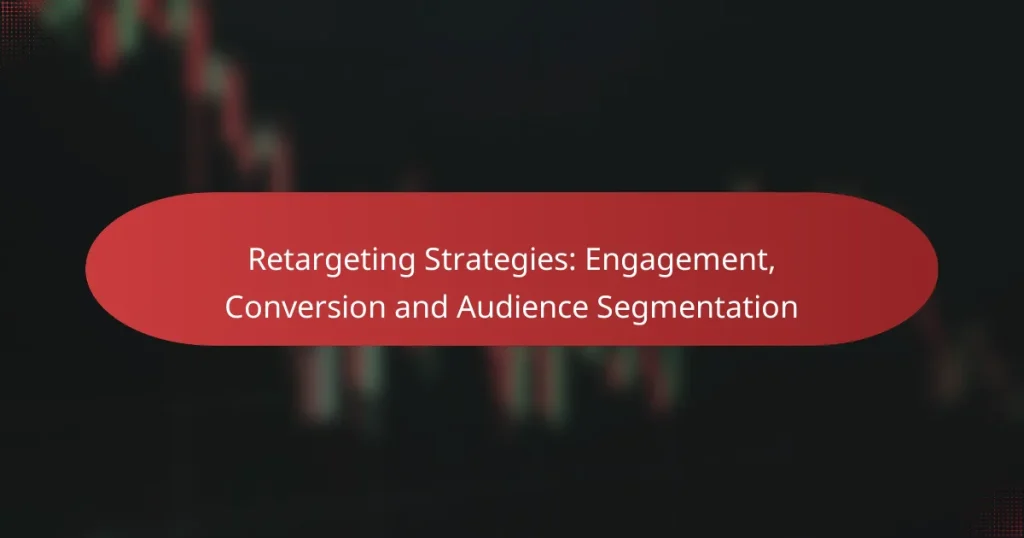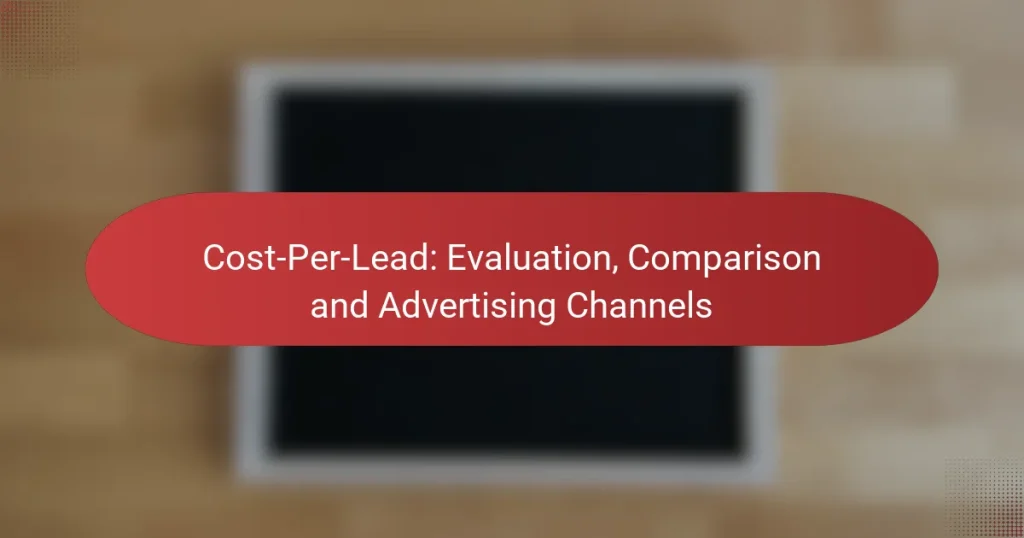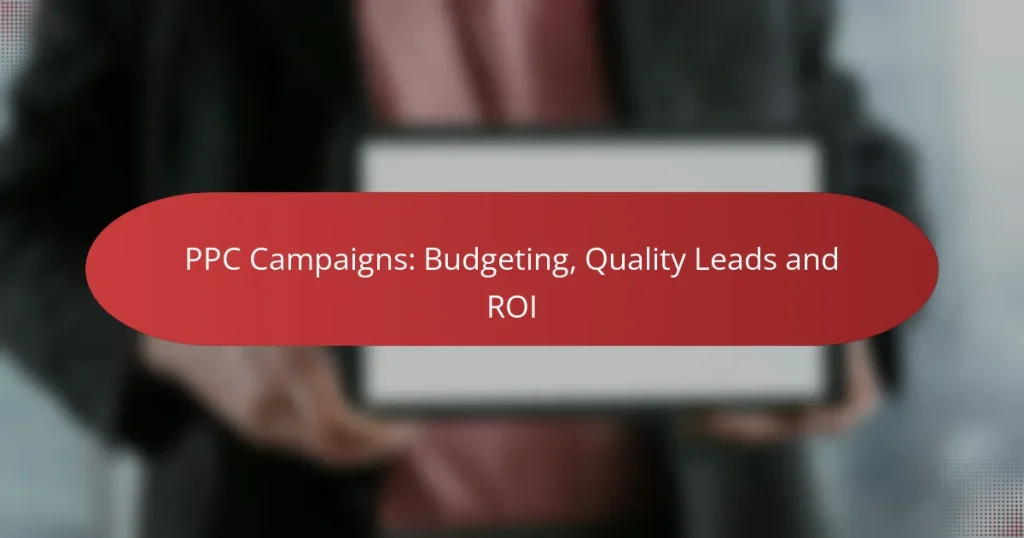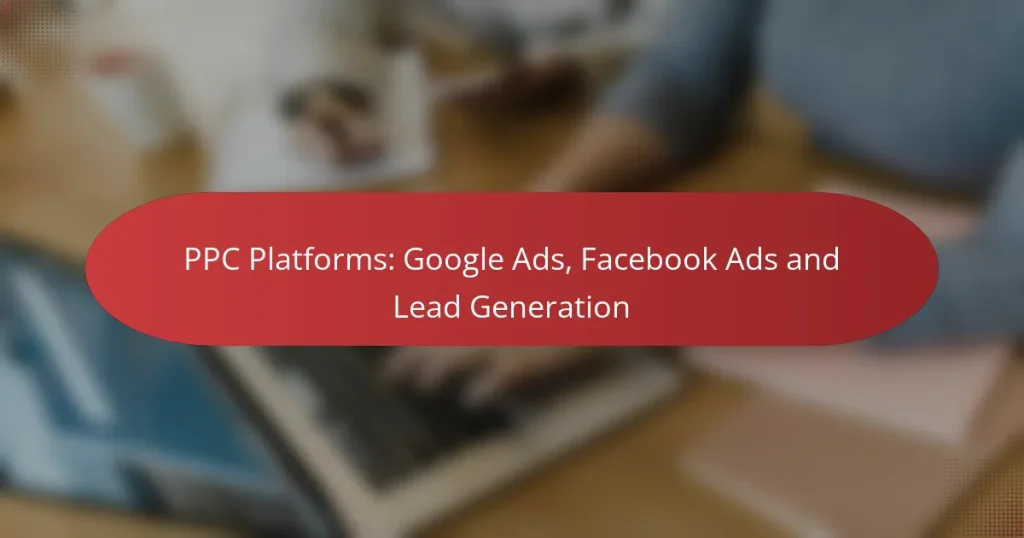Paid advertising is a powerful tool for generating leads by strategically placing targeted ads in front of potential customers. Utilizing various strategies such as PPC, social media ads, and retargeting campaigns allows businesses to effectively reach specific demographics and drive traffic to their websites. By understanding the costs associated with different platforms and targeting options, companies can optimize their budgets and enhance their return on investment.
Retargeting Strategies: Engagement, Conversion and Audience Segmentation
Landing Pages: Optimization, User Experience and Conversion Rates
Cost-Per-Lead: Evaluation, Comparison and Advertising Channels
PPC Campaigns: Budgeting, Quality Leads and ROI
PPC Platforms: Google Ads, Facebook Ads and Lead Generation
Google Ads Metrics: Performance Indicators, Tracking and Optimization
What are the best paid advertising strategies for lead generation?
The best paid advertising strategies for lead generation include PPC advertising, social media ads, LinkedIn ads, retargeting campaigns, and display advertising networks. Each strategy has unique strengths and can be tailored to target specific audiences effectively.
PPC advertising with Google Ads
PPC advertising through Google Ads allows businesses to bid on keywords relevant to their products or services. When users search for those keywords, ads appear at the top of search results, driving targeted traffic to your site.
To maximize effectiveness, focus on selecting high-intent keywords and creating compelling ad copy. Regularly monitor and adjust bids based on performance metrics to ensure a positive return on investment.
Social media advertising on Facebook
Facebook advertising offers robust targeting options based on user demographics, interests, and behaviors. This platform is ideal for reaching a broad audience and generating leads through engaging visuals and tailored messaging.
Utilize Facebook’s lead generation ads, which allow users to submit their information directly within the platform. Test different ad formats and audience segments to optimize your campaigns for better lead acquisition.
LinkedIn ads for B2B leads
LinkedIn ads are particularly effective for B2B lead generation, targeting professionals based on industry, job title, and company size. Sponsored content and InMail campaigns can directly reach decision-makers in your niche.
Consider using LinkedIn’s lead gen forms to simplify the process for users, making it easy for them to express interest in your services. Regularly analyze campaign performance to refine your targeting and messaging strategies.
Retargeting campaigns
Retargeting campaigns focus on users who have previously interacted with your website or ads, reminding them of your offerings. This strategy helps to re-engage potential leads who may not have converted initially.
Implement retargeting pixels on your site to track visitor behavior and create tailored ads that address their specific interests. Monitor engagement rates and adjust your messaging to improve conversion rates over time.
Display advertising networks
Display advertising networks allow you to place banner ads on various websites across the internet, increasing brand visibility. These ads can be targeted based on user behavior, interests, and demographics.
To enhance effectiveness, use eye-catching visuals and clear calls to action. Regularly review performance metrics to identify which placements and formats yield the best results, allowing for informed adjustments to your strategy.
How does paid advertising generate leads?
Paid advertising generates leads by placing targeted ads in front of potential customers, driving traffic to your website or landing page. This approach allows businesses to reach specific demographics quickly, increasing the likelihood of conversions.
Targeted audience reach
Paid advertising enables businesses to define their target audience based on various factors such as location, age, interests, and online behavior. This precision ensures that marketing efforts are directed toward individuals most likely to engage with the product or service.
For example, a local bakery can use paid ads to target users within a specific radius, ensuring that the ads reach potential customers who can physically visit the store. Utilizing platforms like Google Ads or Facebook Ads allows for detailed audience segmentation.
Immediate visibility and traffic
One of the key advantages of paid advertising is the immediate visibility it provides. Unlike organic methods, which can take time to build momentum, paid ads can generate traffic to your site almost instantly upon launch.
This quick influx of visitors can be particularly beneficial for time-sensitive promotions or new product launches. For instance, a seasonal sale can be promoted through paid ads to attract customers right when they are most likely to make a purchase.
Conversion tracking and optimization
Paid advertising platforms offer robust tools for tracking conversions, allowing businesses to measure the effectiveness of their campaigns. By analyzing metrics such as click-through rates and conversion rates, companies can identify which ads perform best.
Regularly optimizing ads based on this data is crucial. For example, if a particular ad is underperforming, adjusting the ad copy or targeting parameters can help improve results. Setting up A/B tests can also provide insights into what resonates with the audience, leading to better lead generation outcomes.
What are the costs associated with paid advertising?
Paid advertising costs can vary significantly based on the platform, targeting options, and bidding strategies. Understanding these costs is crucial for effective budget management and maximizing return on investment.
Cost-per-click (CPC) models
Cost-per-click (CPC) models charge advertisers each time a user clicks on their ad. This model is common on platforms like Google Ads and Facebook Ads, where you can set bids for specific keywords or audience segments.
When using CPC, it’s essential to monitor your click-through rates (CTR) and conversion rates to ensure that your spending translates into leads. A higher CPC can sometimes be justified if it leads to better-quality traffic and higher conversion rates.
Daily and monthly budget settings
Most advertising platforms allow you to set daily and monthly budgets to control spending. A daily budget limits how much you spend each day, while a monthly budget caps your total expenditure for the month.
Setting these budgets helps prevent overspending and allows for better cash flow management. It’s advisable to start with a conservative budget and adjust based on performance metrics and lead generation results.
Average industry benchmarks
Average CPC rates can vary widely by industry, ranging from a few cents to several dollars. For example, competitive sectors like finance and legal may see CPCs in the higher range, while less competitive niches may enjoy lower costs.
Benchmarking against industry standards can provide insights into whether your advertising costs are reasonable. Regularly reviewing performance against these benchmarks can help you optimize your campaigns and improve lead generation efficiency.
What metrics should be tracked for lead generation?
Tracking the right metrics is crucial for effective lead generation through paid advertising. Key metrics like click-through rate, cost per lead, and return on ad spend provide insights into campaign performance and help optimize strategies for better results.
Click-through rate (CTR)
Click-through rate (CTR) measures the percentage of users who click on your ad after seeing it. A higher CTR indicates that your ad is engaging and relevant to your target audience. Generally, a good CTR for paid ads ranges from 2% to 5%, but this can vary by industry.
To improve CTR, focus on crafting compelling ad copy and using eye-catching visuals. A/B testing different headlines and calls to action can also help identify what resonates best with your audience.
Cost per lead (CPL)
Cost per lead (CPL) calculates how much you spend on advertising to acquire a single lead. This metric is essential for assessing the efficiency of your lead generation efforts. A typical CPL can vary widely, often falling between $20 to $200 depending on the industry and competition.
To manage CPL effectively, consider setting a budget and continuously monitoring your ad performance. Adjusting targeting parameters and optimizing landing pages can help reduce costs while maintaining lead quality.
Return on ad spend (ROAS)
Return on ad spend (ROAS) measures the revenue generated for every dollar spent on advertising. A higher ROAS indicates a more profitable campaign. Many advertisers aim for a ROAS of at least 4:1, meaning for every $1 spent, they earn $4 in revenue.
To improve ROAS, focus on targeting the right audience and refining your ad messaging. Regularly analyzing performance data allows for timely adjustments to maximize profitability and ensure your advertising budget is well spent.
What are the prerequisites for effective paid advertising?
Effective paid advertising requires a clear understanding of your target audience, compelling ad copy and creatives, and optimized landing pages. These elements work together to attract potential leads and convert them into customers.
Clear target audience definition
Defining your target audience is crucial for the success of your paid advertising campaigns. This involves identifying demographics such as age, gender, location, interests, and behaviors that align with your product or service.
Utilize tools like Google Analytics and social media insights to gather data on your audience. Creating buyer personas can help visualize and refine your target audience, ensuring your ads reach the right people.
Compelling ad copy and creatives
Your ad copy and creatives must capture attention and convey your message effectively. Use strong headlines, clear calls to action, and engaging visuals that resonate with your target audience.
Consider A/B testing different versions of your ads to determine which elements perform best. Focus on benefits rather than features, and ensure that your messaging aligns with what your audience values.
Landing page optimization
Optimizing your landing page is essential for converting leads generated from your ads. The landing page should be relevant to the ad content, providing a seamless experience that encourages visitors to take action.
Ensure fast loading times, mobile responsiveness, and a clear layout. Use persuasive elements such as testimonials, trust badges, and concise forms to enhance user experience and boost conversion rates.
How to choose the right platform for paid advertising?
Choosing the right platform for paid advertising involves understanding where your target audience spends their time and how each platform aligns with your marketing goals. Consider factors such as audience demographics, ad formats, and budget constraints to make an informed decision.
Assessing audience presence on platforms
To effectively assess audience presence on various platforms, start by researching where your target demographic is most active. Platforms like Facebook and Instagram attract younger audiences, while LinkedIn is favored by professionals and B2B marketers.
Utilize tools like Google Analytics and social media insights to gather data on user engagement and demographics. This information can help you identify which platforms are worth investing in for your advertising campaigns.
Additionally, consider conducting surveys or focus groups to gain qualitative insights into your audience’s preferences. This can guide your choice of platform and ensure your advertising efforts reach the right people effectively.





